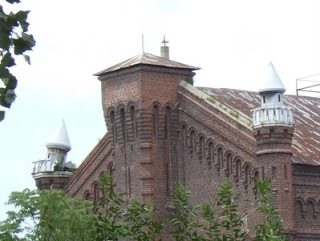Eyes

 The windows of a house are its eyes. And it is said that the first thing that rots in a living being are the eyes. So, for a house, losing its windows would be the first sign of its death.
The windows of a house are its eyes. And it is said that the first thing that rots in a living being are the eyes. So, for a house, losing its windows would be the first sign of its death.
This house has an unusual, curved windows shape, coming probably from the shapes used traditionally in churches. It is both elegant and austere, simple and graphical. Less is more.
There are many 19th century beautiful and neglected houses in my town. Houses that weep.
































